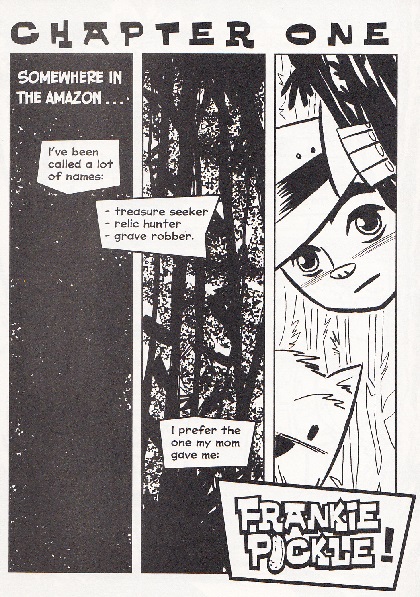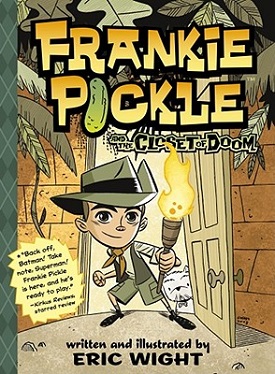Early readers can be a tricky kids’ book genre. I’m not actually sure that’s the preferred term – sometimes they’re called early chapter books, beginning books, easy readers – but you’d know one when you saw it. They’re the books kids read in between picture books and chapter books. They’re the books that they cram into long, low shelves at the bookstore, because they’re usually series titles, so there’s a million of them, BUT they’re so damn thin, it’s almost IMPOSSIBLE to actually read their spines and find the title you’re looking for. (Am I alone in this?) When I think of an early reader, I think of titles like Junie B. Jones or My Weird School, and kids of a certain age LOVE THEM. They can be great gateway books into the world of chapter books, but, like in most kids’ genres, they can also be really, really mass-produced, lazy, and terrible.
So, when I see a truly superior example of an early reader, it stands out, which is one reason why I think the world of Eric Wight’s Frankie Pickle series.
There are only three books in the series – Frankie Pickle and the Closet of Doom, Frankie Pickle and the Pine Run 3000, and Frankie Pickle and the Mathematical Menace – and, man, I wish there were more.
The concept is familiar. There’s a kid, Frankie Pickle, who has an overactive imagination, and, while doing rather mundane tasks (cleaning his room, building a model car, taking a math quiz), he imagines himself as a hero on fantastic adventures that have some nice thematic ties to what he’s doing in the real world. I’m going to say something that might sound like an insult, but, if you’re a true child of the 1980s, you’ll know that I mean this as a high compliment – the tone of the Frankie Pickle series reminds me of The Muppet Babies. (One of the best Saturday morning cartoons EVER.)
But two things really help distinguish Frankie Pickle from its competition: words and images. First, regarding the words, Wight is a very clever writer with a good ear for dialogue and the kinds of fun alliteration and nonsense language that new readers really love encountering. The stories aren’t anything groundbreaking, but they’re short, sweet, and very well-told. When my daughter reads a Frankie Pickle book to herself, she laughs. Even just saying the name of Frankie’s family – the Piccolini family – tickles her funny bone and Wight does a nice job of making the text quick and interesting without making it difficult for newer readers to digest.
However, while the stories are fast and fun, I have to admit, for me, the real draw of the Frankie Pickle books are the images. Let me just put this out there – The three Frankie Pickle titles are the BEST-LOOKING early readers I’ve EVER seen. They’re gorgeous. Absolutely gorgeous.
Wight is a beyond-talented illustrator and each Frankie Pickle book is ingeniously designed as a hybrid between a typical early reader and a comic book. The effect is that each title feels vividly alive. Wight’s artwork pulls readers through each page and, suddenly, they’re rewarded with Frankie’s flights of fancy brought to life in expertly rendered comic book panels. And can I just say – as a longtime comic book fan, I am a big, big kids’ book art snob. I can be extremely critical of the illustrations in my daughter’s books, particularly in the early readers, where, so often, the art feels like an afterthought. [read the rest of the post…]
{ 2 comments }
